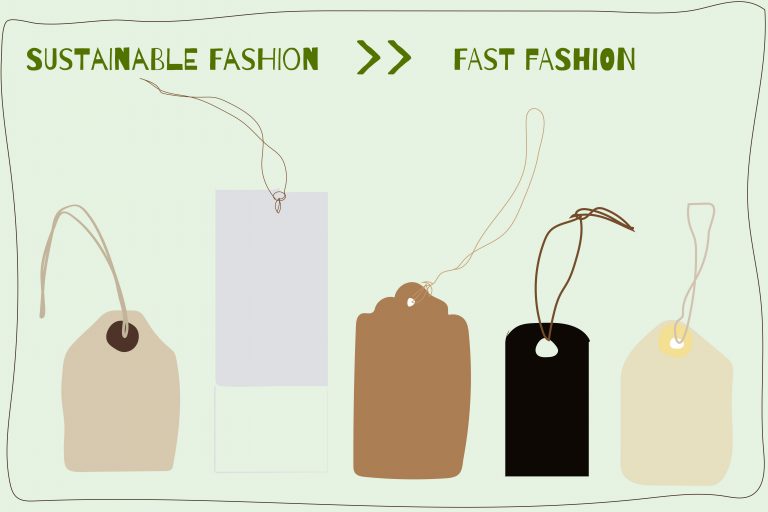Fashion is split into two worlds: fast and sustainable. Where’s the line?
Very few brands are truly ‘sustainable,’ in that they have no impact on the environment. Consumers oftentimes fail to realize this. Logistically, products must be made of something, and making products, even out of byproducts, enables and encourages other consumerist habits and oftentimes releases toxins in the process of production.
On the other hand, the goal of fast fashion is not to destroy the environment; it is merely to make money and is often carried out without much regard for our knowledge of the environment. Rather than demonizing and excluding the existing fast fashion world from the sustainable conversation, those advocating for change must include it and create a middle ground between fast and sustainable.
After all, sustainability is a spectrum, not a badge.
It is critical to accept that sustainable production is a process and that each brand and consumer lands differently on the spectrum. What matters most is not necessarily one’s position on the spectrum but rather what effort they are putting forth to better themselves and the environment.
The movement toward sustainability is about transparency as much as anything else. As previously mentioned, no brand is truly 100% sustainable, and it is important for brands to acknowledge this— to acknowledge that no matter how many sustainable fashion blogs they have been featured on, their work is not done. The process is ongoing.
French sneaker brand Veja, for example, acknowledges its flaws and continues to develop new materials and processes for production. It does not settle at being the best alternative to existing sneakers; it pushes itself to innovate in order to create the best, most sustainable sneakers possible, most recently releasing a shoe featuring vegan corn leather.
While applauding the success of brands founded on sustainability, it too is important to applaud brands which did not initially start with a sustainable initiative but are working toward more sustainable production processes. Of course, it is tricky, yet nonetheless important, to differentiate between brands who claim sustainability as a marketing ploy and brands who are actively trying to make a change. However, it is encouraging to see that brands which don’t traditionally concern themselves with environmental issues are reacting to consumer demand for change, whether they like it or not.
Furthermore, it is important that those advocating for change not jump to chastise brands for making small changes but rather encourage them toward greater ones. It is essential to allow historically unsustainable brands the space to move toward sustainability and to support them along the way. Sustainable sensibilities and practices must not be exclusive to brands which began with this intention but rather must extend to include the fashion industry as a whole.
Activewear brand Athleta, part of the notoriously problematic Gap corporation, is one such company braving the perilous journey across the spectrum. In recent years, it has hired a sustainability expert, set and met ambitious goals, and is transparent about both its progress and lack thereof. Although many criticize it for not doing enough, it continues to take steps in the right direction, and that is something to celebrate.
Written by Abby Hollis
Graphic by Day Toscano

